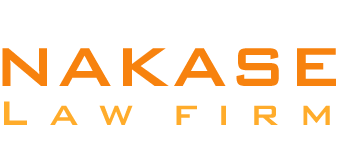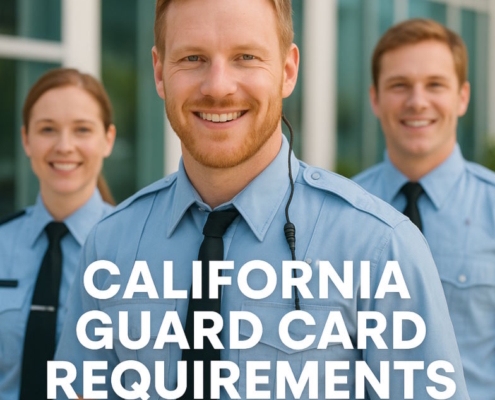Introduction
The prevalence of violence at work in the healthcare sector is noticeably higher than in other industries, according to comparisons. A General Industry Safety Order concerning “Workplace Violence Prevention in Health Care” was unanimously supported by the Cal/OSHA (Occupational Safety & Health Administration) on Friday, 21st October 2016. A few months later, the Department of Administrative Laws passed this National Standard, which was then incorporated into Section 3342 of Title 8 of the California Code of Regulations.
According to this Standard, “workplace violence” is defined as an act of violence that occurs on the job site or as an imminent risk of violence. Lawful actions that are determined to be either defensive or protective of others are not included in the definition. Senate Bill 1299 was amended to include Section 3342 of Title 8 of the California Code of Regulations, which is exclusive to hospitals.
According to research cited in a United States Government Accountability Office report, workplace violence incidents in the healthcare industry are roughly five to twelve times higher than those of nonfatal job violence for workers in other sectors, based on the kind of facility.
In contrast to other health care professions and workers generally, “health care professions like psychiatric staff, psychiatric technologists, and nursing staff members faced elevated rates of work violence,” according to the GAO report. These attacks are becoming more prevalent on a daily basis, and the most likely culprits are either patients, their relatives, or guests.
Types of Violence according to Section 3342 of Title 8 of the California Code of Regulations
The following are the four categories of workplace violence in the healthcare industry:
- Type 1: This category of workplace violence includes acts of violence by people who enter workplaces with deliberate intentions and by people who have no right to be there. A mentally disturbed person might, for instance, buy a pistol, email threats to the institution in advance, and then show up to carry out the crime to arrange a school shooting.
- Type 2: Patients, clients, prisoners, visitors, students, or other people who accompany patients may target staff in this sort of workplace violence. For example, when a mental patient skips their medication, there is a possibility that they will become angry with their nurse.
- Type 3: In type 3 violence, managers, supervisors, or current/former staff members commit this violence at the workplace against their coworkers.
- Type 4: People who have personal ties to staff members but are not employees of the company commit this kind of violence in the workplace. For example, an angry ex-husband might come up at his wife’s place of employment to start a fight.
The Standards Board passed Section 3342 of Title 8 of the California Code of Regulations to further clarify and define that this rule applies to most facilities that are established, staffed, and used for the diagnosis, prevention, care, or management of human illness, whether it be mental or physical, including rehabilitation and convalescence, including care after and during pregnancy, or for any combination of these reasons, for any number of individuals, to whom the people are allowed in for a 24-hour period or longer.
This Standard, which covers workplace violence related to healthcare training, will also cover medical emergencies, drug rehabilitation centers, medical transportation, and ambulatory medical services for people who are confined in detention and correctional facilities. Certain state-run healthcare facilities would be exempt from this Standard.
The updated requirement requires businesses to provide the precautions mandated by Section 3342 of Title 8 of the California Code of Regulations and applies to all companies with workers in hospitals, health care service groups, and activities. Employers must provide medical care, training, and personal safety gear to their workers during working hours, at an appropriate time and location, and without charging them for these protections.
Employers of healthcare facilities are required by this order to establish and uphold a healthcare assault prevention strategy that includes a number of protocols. Examples of “effective detection of risk variables, dissemination & compliance of procedures, and subsequent investigations” are covered by these protocols. Employers are strongly encouraged to examine their organization’s strategy at least once a year to make sure it continues to be effective. They have to make any necessary adjustments to ensure that it fulfills Section 3342 of Title 8 of the California Code of Regulations.
Review and Training
A healthcare organization’s examination of its training and preventive plan for workplace violence should, at the very least, cover:
- Workers and their representatives
- Workplaces, services, and operations for employees
- Current security protocols
- Personnel
- Equipment
- Job design
Employees must receive workplace violence training from their employers with the goal of educating them on the types of workplace hostility they may encounter on a daily basis. It is the duty of employers to work in tandem with representatives and employees to develop training materials and curriculum, conduct training sessions, and update the program.
When new techniques and equipment become available, additional workplace violence dangers are recognized, new employees are recruited or given new responsibilities, or a healthcare facility’s violence prevention program is first launched, training should be given. Employers’ corrective actions and recognized workplace violence risks must be highlighted in the first training.
Healthcare employers must keep thorough records of all occurrences, post-incident reactions, and work-related injury inspections in the shape of an aggressive event log, in addition to the required training that needs to be given to staff members.
The following information should be included in every violent incident log entry:
- The incident’s date, time, place, and department
- Detailed account of the incident
- Categorization of the perpetrators of the violence, the incident’s conditions, and the precise time of the event
- Incident type
- The incident’s aftereffects
- Contact details of the person who submitted the log entry
Conclusion
Section 3342 of Title 8 of the California Code of Regulations serves as a clear reminder that, despite the fact that numerous businesses must provide compliance training, its importance cannot be understated. The primary goal is to safeguard vulnerable workers, prevent bodily harm, reduce business interruptions and additional costs (medical & legal), and maintain company spirit and reputation. The implementation of rules and regulations outlined in this Standard is important.
Employee education on these topics will keep the company in compliance. It also begins a dialogue on how everyone can share the jointly advantageous burden of ensuring that the workplace is safe. It may not be possible to avert workplace violence in the healthcare sector, but with the proper measures in place, managers and employees can notice suspicious speech and behavior before it escalates into explicit physical violence.































